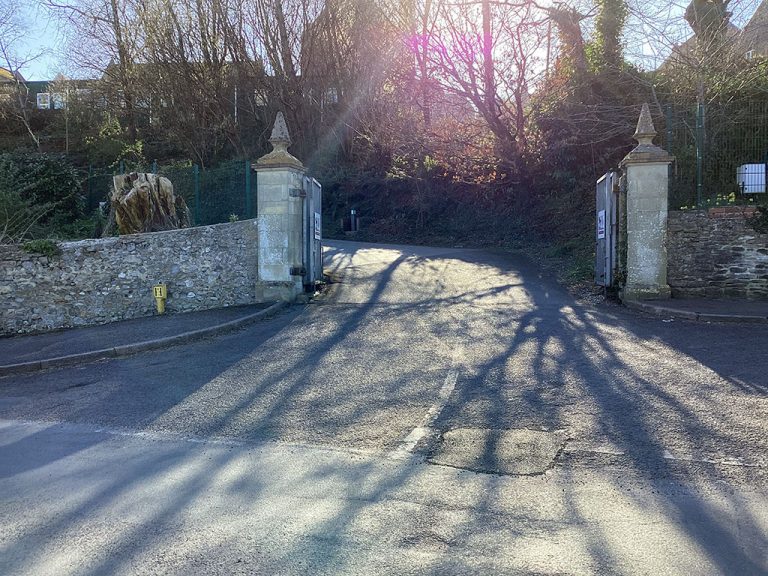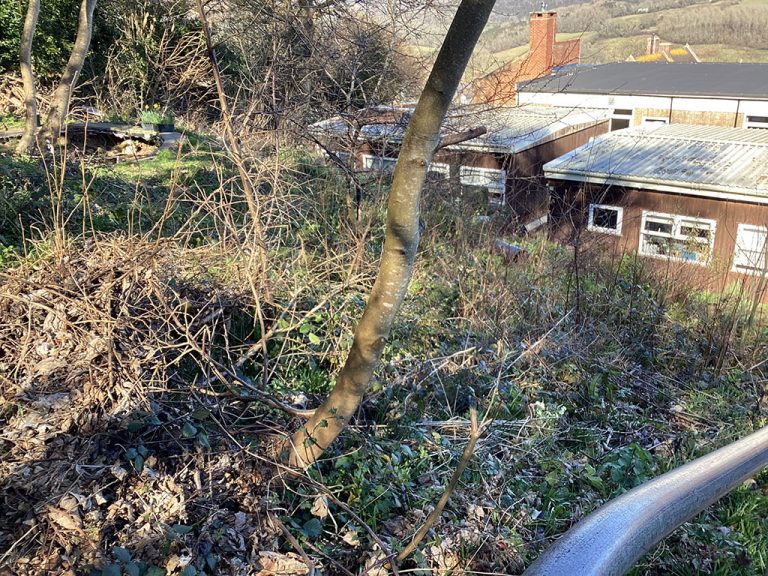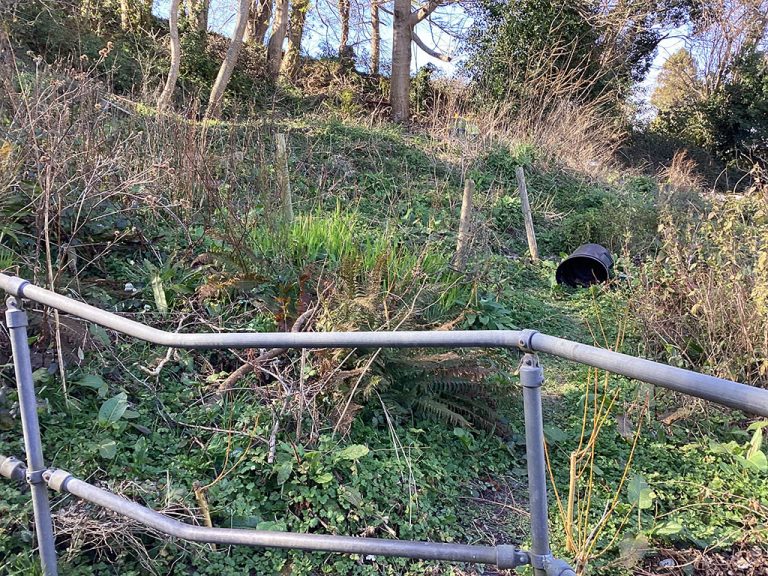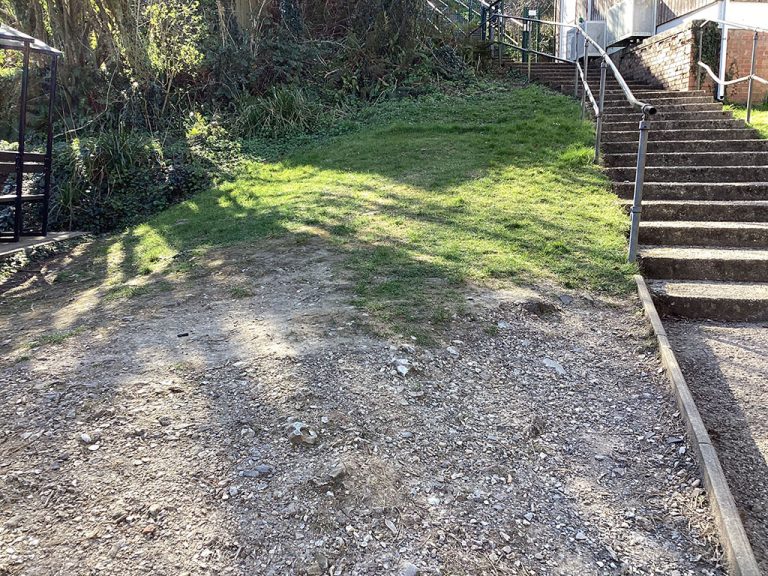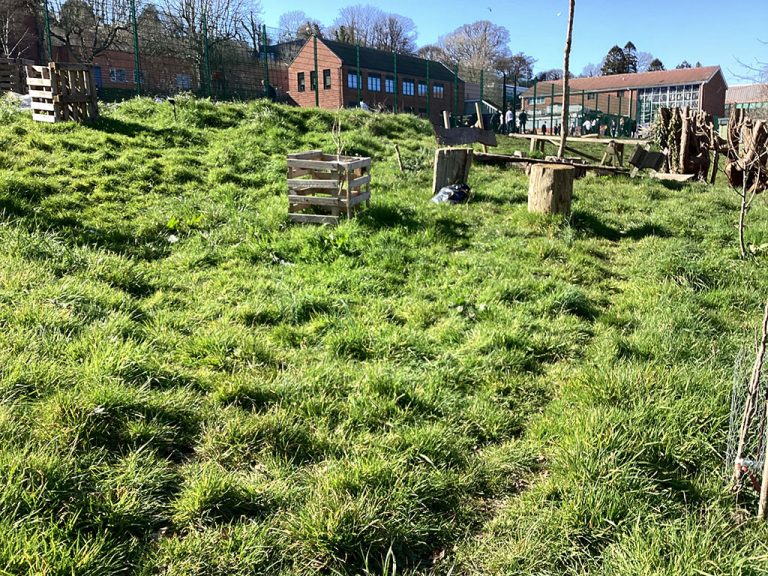Botanical Garden Project
The Woodroffe School has an extraordinary physical site – the main campus is located on a hill side overlooking the UNESCO World Heritage Site of the Jurassic Coast. Views extend to the Golden Cap and Portland.
At the same time the area has a micro-climate and is an ideal location for growing a wide variety of species including hardy sub-tropicals. It is mild but also wet.Summers are rarely overly hot and winter temperatures rarely are below zero for any extended periods of time.

The main buildings within the School date back to the Victorian period and are very handsome red brick. There are many outside areas for recreation, learning and planting areas throughout the main campus. These are on a number of different levels of elevation providing a series of walks around the school which encompass both views across the Bay but also of different parts of the buildings and roof tops. The School has a number of modern pre-fabricated classrooms with flat roofs. Whilst these are less attractive than the main parts of the building, they could be enhanced by strategic planting around them. The project would aim overall to create a campus with a series of core areas of planting to create a mini botanical garden/ or garden areas which would be then linked where possible by greenery. The planting will be designed with minimal maintenance in mind so as to be sustainable long term without significant additional expenditure or labour requirements.
Donate to the Woodroffe Botanical Garden Green Up on our JustGiving page.
The aims of the Botanical Garden Project would be manifold. First, it is well established through scientific research that being surrounded by nature has an significant positive impact on mental health and well-being. As such improving and developing the planting and grounds of the School will have an immediate and long term positive impact of students and staff alike.
Secondly, every institution should be aiming to consider its environmental impact and how it can contribute to biodiversity and climate change. As part of this, introducing bird and insect friendly planting into the School will help create an enhanced area for this as well as assisting the creation of environmental corridors through which species can migrate and coexist with humans. Increased planting will assist albeit in a small way and alongside other initiatives towards reducing the School’s carbon footprint.
Thirdly, it will enhance the learning and educational opportunities for children. Outdoor areas can be improved and created with different themes eg well-being, sub-tropical planting, a Physic garden, a Fruit and Vegetable Garden. Children, parents and staff can get directly involved in the project itself through eg through an after school club; Grounds Days; lessons taken outside; workshops with local landscapers.
Fourthly, it will have a community aspect to it through local fundraising, engagement with local gardens, nurseries, landscapers, the Council, and ultimately through an annual open day/weekend outside school time to allow the public and alumni to enjoy the Grounds.
Fifthly, it will enhance the buildings and the sense of identity, history and significance of the School within the Community. As the School has just passed its century birthday of education, it would serve to mark this in a lasting aesthetic and physical way bring together a community of people who both love the School and its surrounds.
Stage 1 Scoping: Small working group to examine the grounds and identify areas of focus for planting; take photos, draw sketches and create a written brief with illustrations to form the basis of a funding proposal.
Stage 2 Development of Working Group: Identify a small group of committed volunteers with varying skills including horticulture; landscaping; botany; garden design; history; heritage; fundraising; grant applications, project development. This should include staff, parents, children, and locals.
Stage 3: Drawing of Initial Plans: A small amount of funding may be needed to assist with the development of a detailed plan of planting for each area within the School and associated costs. Where possible expertise on a pro bono basis will be elicited from existing cohort of parents, staff and community.
Stage 4: Fundraising: A multi-pronged approach to fundraising to include national state grants, regional/local authority grants, corporate and individual sponsorship, Friends of Woodroffe Botanic Gardens Scheme, PTFA fundraising, local organisations, Crowdfunding etc. The fundraising would be broken down into stages to allow planting to get underway once the required amount of funding has been reached for each area.
Stage 5: Planting: This will be an ongoing process involving landscapers and where possible teams of volunteers and children to assist.
Stage 6: Education and Use: The Working Group to develop and set in motion various ways in which the gardens can be used and maintained including through curriculum, extra-curricula activities eg Grounds Club, Grounds Days, Open Days.
It is envisaged that this Project will be run as a standalone project but with involvement and assistance from the PTFA in terms of ideas for fundraising, use of PTFA account to receive funds; marketing etc.

